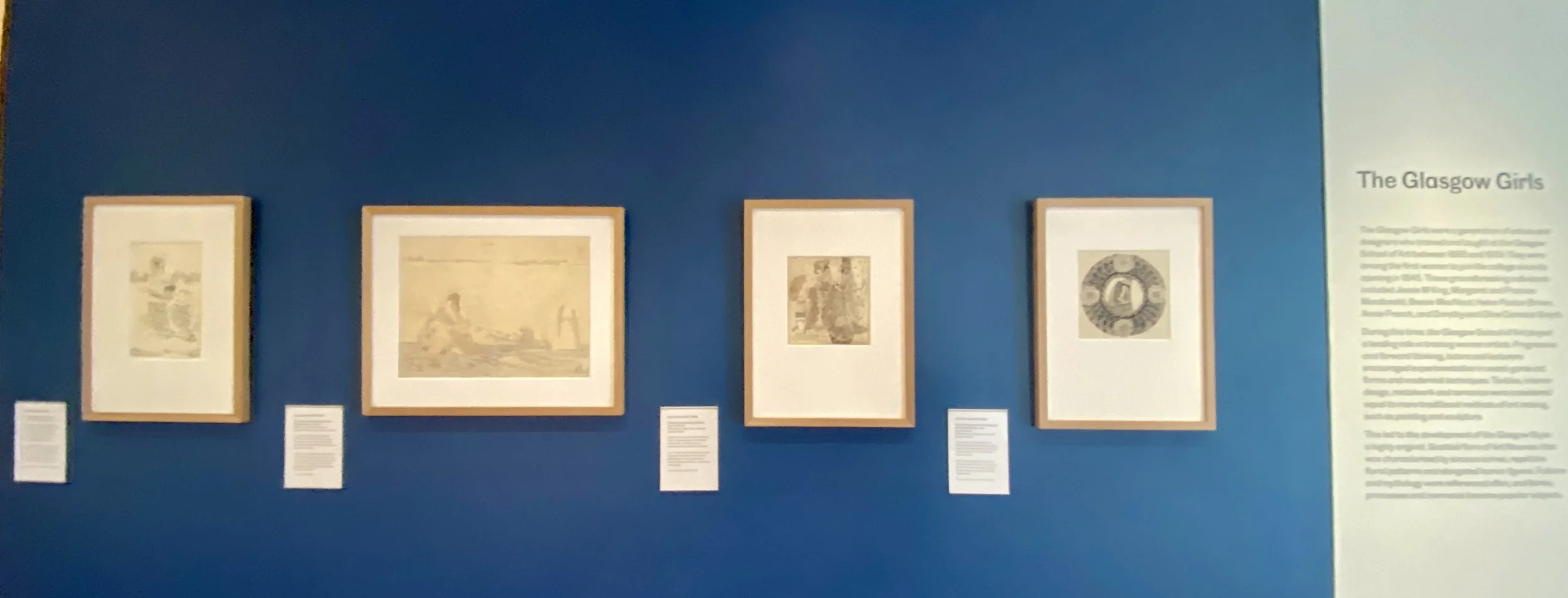The Glasgow Girls at the Scottish National Gallery
My second exhibition in a week to contain only five works. Once again, I was left wanting more, this time by The Glasgow Girls at the Scottish National Gallery. Despite the grand title, this tiny display was tucked onto a single wall within galleries dedicated to Scottish art.
They never called themselves the “Glasgow Girls” but these were artists who trained and taught at the Glasgow School of Art between 1885 and 1939 — the first generation of women to join the college since its opening in 1845. Among them: Jessie M King, Margaret and Frances Macdonald, Bessie MacNicol, Helen Paxton Brown, Annie French, and Dorothy and Olive Carleton Smyth.
The GSA at that time had a reputation for being progressive and forward-thinking. Women weren’t only accepted — they were encouraged to experiment with avant-garde techniques, and to treat so-called “decorative” disciplines like textiles, metalwork and ceramics as equal to painting and sculpture.
This spirit of experimentation helped shape what became known as the Glasgow Style; a distinctive form of Scottish Art Nouveau characterised by sinuous curves, floral patterns, elongated figures, and references to folklore and mythology. Fairies, princesses, and mermaids regularly appeared, giving the work a delicate, dreamlike quality.
In this particular display, that delicacy and imagination was on full show.
The works by King and French were finely detailed and utterly enchanting, the kind of pieces that pull you in close. You could even see the faint traces on the glass where viewers had leaned in to get a better look.
Then came Bacchanale, a bold and energetic painting by Olive Carleton Smyth — a new addition to the National Galleries collection.
A vibrant punch of colour. A totally different mood. But no less striking.
Every work in this small display was beautiful. But five works. That was all.
And once again, the disappointment crept in. Not with the art, but with how little space had been given to it. This wall was surrounded by rooms full of works by male artists, and the imbalance was impossible to ignore.
What’s frustrating is the contrast between the thoughtful wall text — which celebrates the GSA’s forward-thinking approach and the groundbreaking nature of these women’s practices — and the limited display itself. The marketing talks of The Glasgow Girls in proud tones, but what’s actually shown feels like a token gesture.
It left me asking: where’s the rest?
These women deserve more than a wall.
More than a label.
More than a nod in passing.
Let’s give the Glasgow Girls the space they earned.




